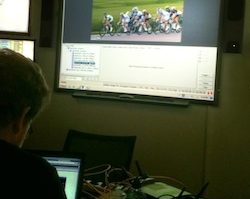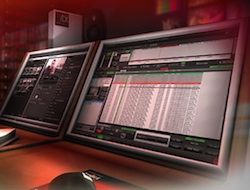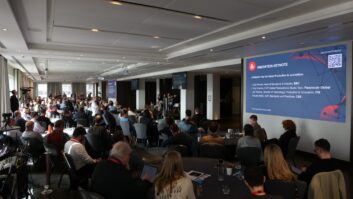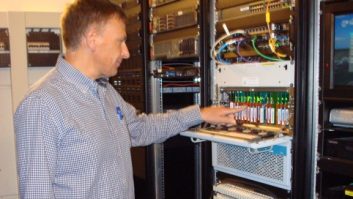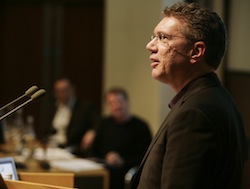
Providing catch-up TV content on the web, and other platforms, within minutes of its live transmission has been the key driver for Nederlandse Publieke Omroep in adopting its current IT broadcast workflow. NPO speaker was Egon Verharen, and the session was sponsored by Technicolor.
NPO looks after 22 broadcast organisations that produce content for three main TV channels, 12 digital themed channels, 26 radio channels, 1,200 websites, and content to mobiles and other platforms. It started internet services seven years ago and now covers almost all platforms, with the Sony Playstation its latest outlet (with the rest coming soon).
“We provide central technical facilities for some of these channels, and also do some playout, although that is mainly handled by Technicolor,” said Egon Verharen, its director of engineering. Most of his staff are IT engineers.
User demand is growing rapidly. “The take up of the service is tremendous (including mobiles and digital TV), but viewer expectation is getting higher.”
It is visited by 80% of internet users in the Netherlands per month, with an average viewing time of almost 16 minutes and 13 million videos viewed. Most programmes are watched within 24 or 48 hours and it can add 15% or more to the audience (40% for some show), which is why “we have to get shows online as fast as possible,” he said, particularly for its three main channels, and in all the formats. “95% has to be delivered within ten minutes. Our average is four minutes.” In prime time more than 50% of TV is live, so it has to be encoded and transcoded for the different platforms live, and it is only programmes that are more than four hours long that take more than four minutes for delivery.
“You can’t make a differentiation between different formats, different platforms or different distributors. It has to be as fast as possible.” This meant that the Technicolor system had to talk to NPO’s metadata system.
Previously, NPO had to duplicate its system each time it added a new platform, so the new system had to be highly scalable, making it easy to add new formats and platforms. As three simulcast HD channels started recently, HD catch-up is next.
Providers wanted different bit rates and formats, but it is now standardising on H.2643 on an MPEG-2 or MPEG-4 bit stream at a single bit rate. Although linear broadcast is still its priority, some of the shows are becoming available first online.
Shows have to be delivered to encoding as clean as possible, without now/next graphics, etc., and the system adds graphics and subtitles as necessary.
Because of rights issues, it can’t deliver all programmes to all platforms, but it still encodes and transcodes everything, so there will be no delay – especially as the broadcast sometimes doesn’t tell them until after the show what rights it has.
The system produces very detailed logging and reporting. “We cut back in the hours spent in researching where it went wrong by putting in a new system that distributors can query first,” said Verharen.
“The system has to be flexible enough to react to unexpected live schedule changes, even where no metadata is available,” he said. Most problems arise from the broadcast playout automation system, when the director changes something at the last minute and the trigger ID is not known by the system. “It’s not going wrong in the sense that it doesn’t deliver files, but the right metadata isn’t being supplied and fixing this can take a couple of hours rather than four minutes.”
Besides Technicolor, which deals with design, system integration, operational management and playout, its main technology providers are Vivesta and Telestream. It uses Vivesta’s MediaFlow, which allows it to control everything from tape ingest to broadcast, interactive and on-demand services via one integrated workflow, and Telestream’s FlipFactory for automated, multi-format transcoding. – David Fox
